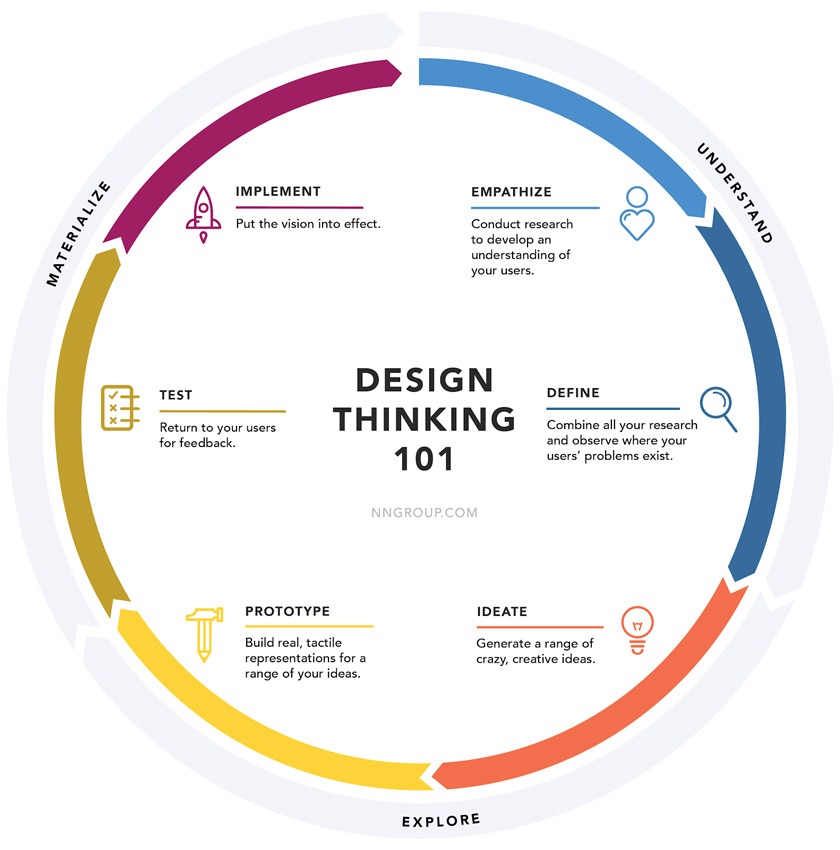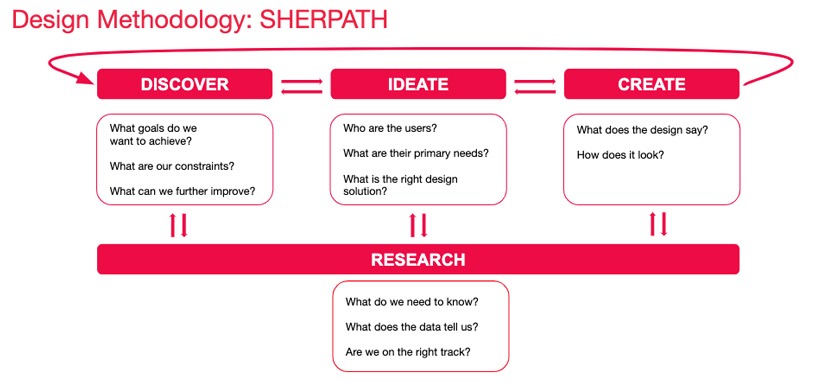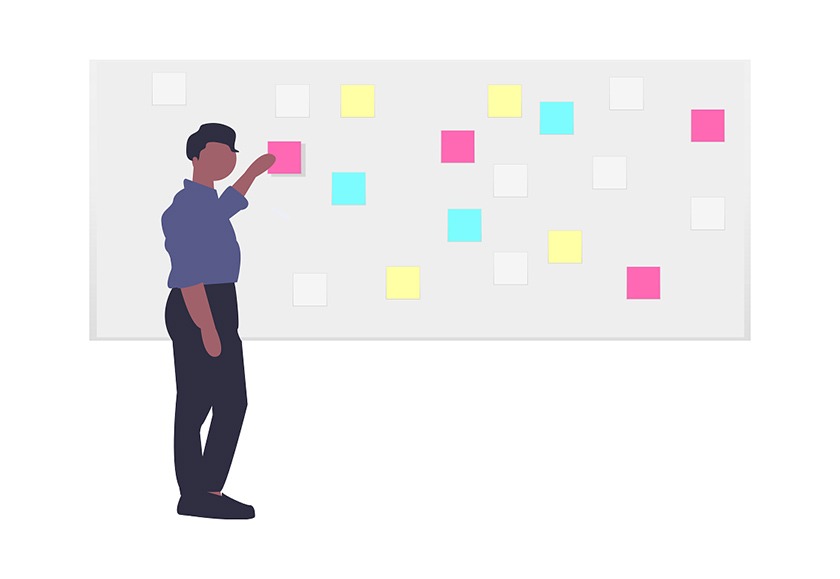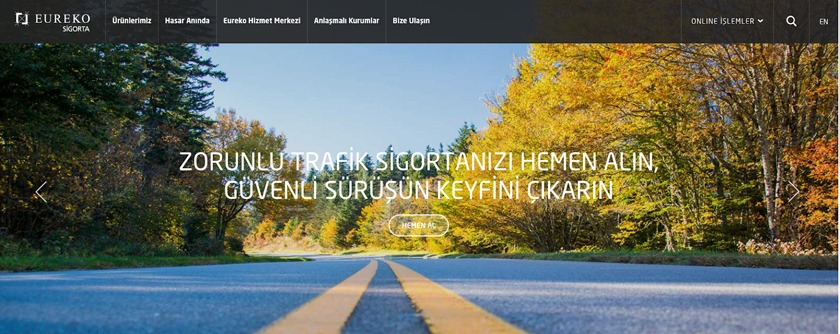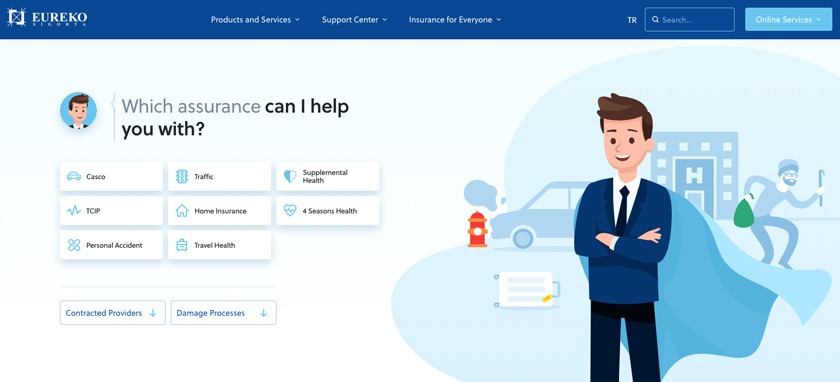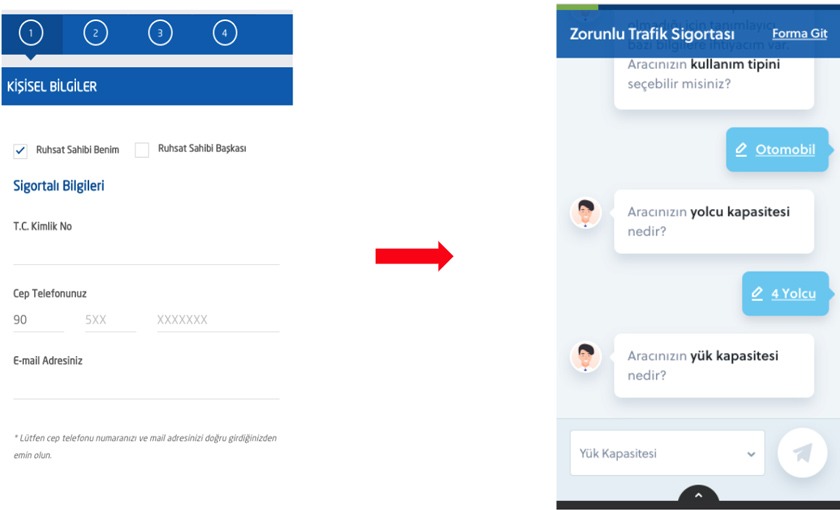Have you designed how you design? It might like a nursery rhyme, but this is a question worth thinking about. If you are looking for a digital studio to support you in your design processes, ask the candidates’ representatives this question first.
The concept of design is so prevalent in today’s business world that it can not be defined only by adjectives such as creative, aesthetic and beautiful. This phenomenon is a result of the fame that design thinking has gained worldwide.
When looking back, SHERPA sees that design used to come after engineering and production in a hierarchical sense and it was perceived as the last step before the launch to make the product more aesthetic. SHERPA knows that this has resulted in many innovations failing to meet customers’ actual needs. Only after companies began to move the design phase to the beginning of the production process, designers’ impact increased significantly and human centered solutions started to come to the table.
Of course, for this approach to be accepted and used across large companies, it had to fit into a certain model or framework. This is how design thinking, the framework leveraging creative design process for solving business problems, has earned its much-deserved popularity.
Design Thinking Diagram
This is what the cycle you see above tells in a nutshell: First, empathize with the audience and identify their needs/problems correctly. Next, come up with ideas that would meet these needs and test the validity of the solution you are leaning towards. Once the implementation is done, go back to the first step and start again.
What makes this approach -and therefore the concept of design- so valuable is that it is not limited to the business context alone. You can also use this methodology when you have an important decision to make in your personal life.
SHERPATH
This methodology inspired SHERPA to embrace the motto “Everything is design” at SHERPA. Unlike those who dream of an alluring visual interface when design is mentioned, SHERPA thinks of systems and methodologies.
Although SHERPA’s final output as a digital design studio is often a Photoshop or Sketch file, they are aware that what they call design is a process and that they cannot ensure the quality and sustainability of their work unless they have an accurate design methodology in place. This is why they came up with SHERPATH.
They applied this lean approach, inspired by globally accepted principles and models, in more than a hundred projects and made several iterations to increase its efficiency.
The logic of their methodology is in line with design thinking. Regardless of a project scope, they begin with the Discovery phase and ask three basic questions:
- What goals do they want to achieve?
- What are their constraints?
- What can they further improve?
They don’t continue the process without agreeing on the answers with the project owner.
SHERPA begins the Discovery phase by analysing research reports that their project owner shares with them so that they can take advantage of the existing insights and not dig for the answers that are readily available. Next, they conduct qualitative/quantitative data analysis and deepen their insight pool by analyzing data from measurement tools are set up on digital products and by interviewing stakeholders/users.
After the Discovery phase, they start the conceptual process of design they call Ideation. By asking questions like:
- How do they define their personas?
- What should their ideal journey look like?
SHERPA defines the right design solution. Let’s highlight that they still don’t have design deliverable (in the classic sense) at this point.
In the third stage, Creation, they are interested in answering the question “how do they design it right?”. They work on the wireframe and UI designs in this direction and reveal the visible part of the iceberg.
Finally, as you can see in the diagram, activities in the research phase can come into the picture any point in the cycle. While research conducted in the Discovery phase aims to bring new insights on users to the table, a usability test following wireframe design might allow them to validate or debunk their design logic.
Digital Transformation with SHERPATH
Here is one of the success stories they have created with SHERPATH.
In 2018, they partnered with Eureko Insurance, a subsidiary of globally known insurance group Achmea, for redesigning the user experience of their corporate website and online branch.
Ethnographic research conducted recently and workshops they run during Discovery phase with target personae and the project owner revealed that users had a hard time while browsing and buying insurance policies online, and the main reason for that they find the insurance ecosystem in Turkey very complicated, far from creating a perception of trust.
Building on this insight, SHERPA worked on several approaches to address this problem during Ideation and they decided to position Eureko as a “hero brand” guiding users during every step of the journey by accurately describing the benefits of buying an insurance policy and the nuances among various products rather than focusing on hastily closing a sale.
In the Creation phase, they worked on a design solution that would communicate this approach clearly to the users and designed the information architecture that would allow them to find what they need easily.
Eureko Insurance Home Page (Old):
Eureko Insurance Home Page (New):
SHERPA prototyped and tested alternative interaction scenarios with users and decided to move on with “conversational UI” approach that felt very familiar to users who communicate through digital devices on a daily basis. Most participants validated the idea that buying insurance by chatting with a virtual assistant would feel more natural and hassle-free compared to filling out conventional forms.
To sum up, defining user needs through quantitative and qualitative research and validating alternative solutions with potential users, they were able to manage Eureko’s transformation with a user-centric approach.
Last but not least, as SHERPATH highlights, it is crucial to revisit the Discovery phase after the new experience has put in place. Restarting the design cycle and measuring the new experience’s performance based on users’ digital footprints is what makes UX optimization possible.
To conclude, digital products/services that are designed with “we know best” mentality and ready-made solutions are highly likely to stay behind the competition. A design partner equipped with a design system of global standards -whether its name is as cool as SHERPATH or not- would be much more likely to create solutions that would make you and your users happy.
Applying design thinking is imperative for standardizing creative processes and enabling sustainability in terms of design quality. This is why SHERPA’s best advice would be to ask your potential design partner this question: “Have you designed how you design?”.
About SHERPA
SHERPA has redefined the way in which customers help their customers interact and transact with them. They have a data-driven approach to creating interfaces and bespoke experiences.


